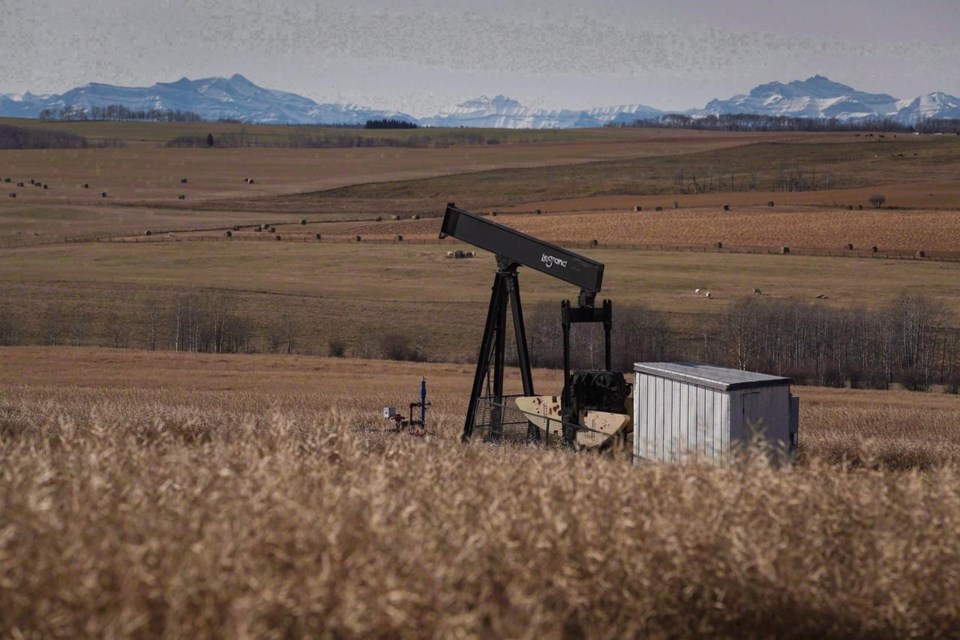A bankruptcy hearing that could determine whether more than $200 million in oilpatch environmental liabilities wind up on the public dime will have to go back to court.
The Alberta Court of Appeal ruled Friday that the long-running bankruptcy of Sequoia Resources, which involves cleanup costs for thousands of oilpatch facilities, should return to the province's Court of Queen's Bench. Among other errors, the court said the original judge failed to account for the impact unreclaimed facilities have on the value of an energy company.
"End-of-life obligations could be loosely thought of as asbestos in the walls of a house," the Appeal Court justices wrote in their decision.
"It will need to be rectified sooner or later, and someone will have to pay for it ... until then, however, the house is worth less than a similar asbestos-free house."
The case began with a 2016 reorganization of Perpetual Energy, a Calgary-based energy company, that saw many money-losing properties with major environmental liabilities transferred to a now-bankrupt associated company, renamed Sequoia Resources.
That transfer came with a small share in a large number of profitable wells. That share remained with Sequoia for a short time and was quickly sent to a further associated company called Perpetual Operating Company.
Bankruptcy trustee PricewaterhouseCoopers, which brought the lawsuit against Perpetual, argues Sequoia only held the profitable assets long enough for it to pass regulatory review.
Alberta regulators weigh a company's assets against its liabilities before approving licence transfers to ensure companies are able to meet their environmental obligations. Under the rules at the time, Sequoia got full credit for the profitable wells despite owning one per cent of them.
After Sequoia transferred the profitable wells back to Perpetual, it owned mostly liabilities. In 2018, Sequoia declared bankruptcy.
At the time, it held licences for 2,300 wells, almost 200 facilities and nearly 700 pipeline segments. It also owned between 700 and 800 wells where production was stopped but the surface hadn't been restored. Almost two-thirds of Sequoia's holdings were shut in or abandoned.
Court documents put the cost of cleaning up those facilities at $213 million. As well, the company owed another $10 million in unpaid property tax.
PricewaterhouseCoopers claims the transaction that allowed Perpetual to get rid of its unprofitable assets was invalid.
Groups including the Orphan Well Association, an industry-funded body that cleans up wells for which no owner can be found, and Canadian Natural Resources Ltd. intervened in the action in support of PricewaterhouseCoopers.
Perpetual had asked on two occasions for the receivers' lawsuit to be dismissed and was successful both times. Friday's decision is the second Appeal Court ruling tossing those earlier decisions out.
That puts PricewaterhouseCoopers and Perpetual back in Court of Queen's Bench.
Drew Yewchuk of the University of Calgary's Public Interest Law Clinic, who has followed the complicated case, said the rules have changed since Sequoia's bankruptcy. But the case could still have an important impact.
"One of the more interesting questions that might come up is whether an oil and gas company can structure their affairs to get something past the regulator," he said. "The Sequoia and Perpetual transfer was structured in a very bizarre manner."
He called the one-per-cent share Sequoia held in the profitable wells "extremely deceptive."
Neither PricewaterhouseCoopers nor Perpetual Energy responded to a request for comment on the ruling.
This report by The Canadian Press was first published March 28, 2022.
— Follow Bob Weber on Twitter at @row1960
Bob Weber, The Canadian Press



